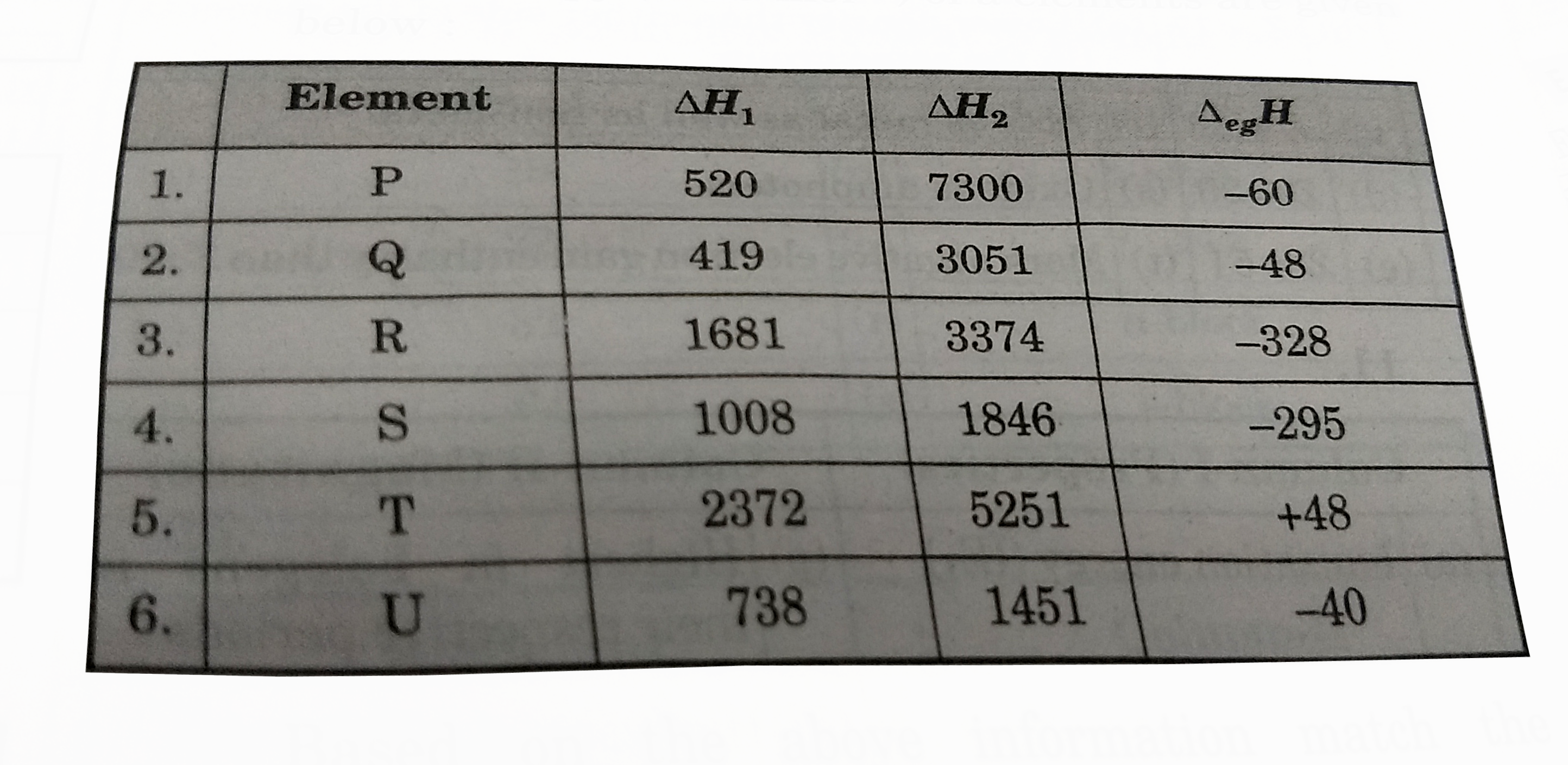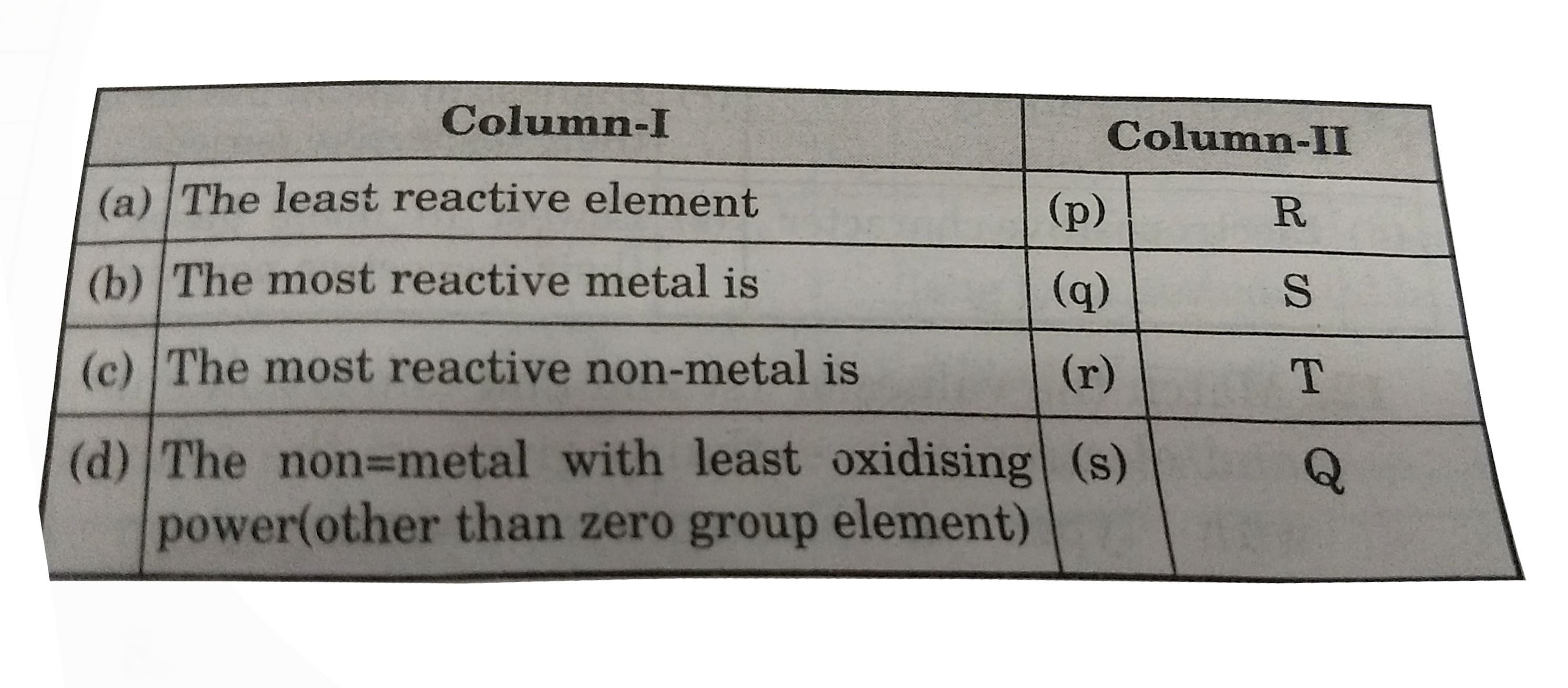Following are the values of the electron gain enthalpy (in kJ of the formation of and from O:
The correct Answer is:B
Step by step video, text & image solution for Following are the values of the electron gain enthalpy (in kJ mol^(-1)) of the formation of O^(-) and O^(2-) from O: by Chemistry experts to help you in doubts & scoring excellent marks in Class 11 exams.
Topper's Solved these Questions
- BOOK - GRB PUBLICATIONCHAPTER - PERIODIC TABLEEXERCISE - E.Electronegativity54videos
PERIODIC TABLE
- BOOK - GRB PUBLICATIONCHAPTER - PERIODIC TABLEEXERCISE - F.Acidic-Basic Character, Hydration etc.45videos
PERIODIC TABLE
- BOOK - GRB PUBLICATIONCHAPTER - PERIODIC TABLEEXERCISE - C.Ionisation Energy93videos
PERIODIC TABLE
- BOOK - GRB PUBLICATIONCHAPTER - NOMENCLATURE AND CLASSIFICATIONEXERCISE - Subjective Type24videos
NOMENCLATURE AND CLASSIFICATION
- BOOK - GRB PUBLICATIONCHAPTER - PRACTICAL ORGANIC CHEMISTRYEXERCISE - Exercise 4 (Matrix match type )1videos
PRACTICAL ORGANIC CHEMISTRY
Similar Questions
The first (ΔH1) and second (ΔH2) ionisation enthalpies (in kJmol−1) and the (ΔHeg) electron gain enthalpy (in kJmol−1) of a elements are given below:

Based on the above information match the following columns.
 View Solution
View SolutionCompute the heat of formation of liquie methyl alcohol is kilojoule per mol using the following data. Heat of vaporisation of liquid methyl alcohol =38kJ/mol. Heat of formation of gaseous atoms from the elements in their standard states :H=218kJ/mol,C=715kJ/mol,O=249kJ/mol.
Average bond energies:
C−H415kJ/mol,C−O356kJ/mol,O−H463kJ/mol.View Solution
Knowledge Check
- Question 1 - Select One
Which of the following are the values of electron affinities in kJ/mol for the formation of O− and O2− from O?
A-142, -702B-141, 702C142, 702D−142,−142 - Question 2 - Select One
The electron gain enthalpy (in kJ/mole) of F, O, N and C respectively are :
A−328,+31,−141,−22B−328,−122,−141,+31C−328,+31,−121,−141D−328,−14,+31 and -122 - Question 3 - Select One
The second electron gain enthalpies (in kJ mol−1) of oxygen and sulphur respectively are:
A−780,+590B−590,+780C+590,+780D+780,+590
Calculate the lattice enthalpy of KCl from the following data by Born- Haber's Cycle.
Enthalpy of sublimation of K=89kJmol–1
Enthalpy of dissociation of Cl=244kJmol–1
Ionization enthalpy of potassium = 425kJmol–1
Electron gain enthalpy of chlorine = –355kJmol–1
Enthalpy of formation of KCl=–438kJmol−1View SolutionOut of O−andO , which has more negative electron gain enthalpy?
View SolutionCalculate the standard enthalpy change (in kJ mol−1) for the reaction H2(g)+O2(g)→H2O2(g), given that bond enthalpy of H-H, O=O,O-H and O-O (in kJ mol−1) are respectively 438, 498, 464 and 138.
View SolutionThe conversion of O(g) into O2−(g) is an enothermic process by gaining 603kJmol−1 of energy.If the first elecrtron gain enthalpy of O(g) is −141kJmol−1 then, what woud be the second electron gain enthalpy of O(g)
View SolutionWhat is the enthalpy change for the given reaction, if enthalpies of formation of Al2O3 and Fe2O3 are −1670 kJ mol−1and−834 kJ mol−1 respectively?
Fe2O3+2Al→Al2O3+2FeView Solution

